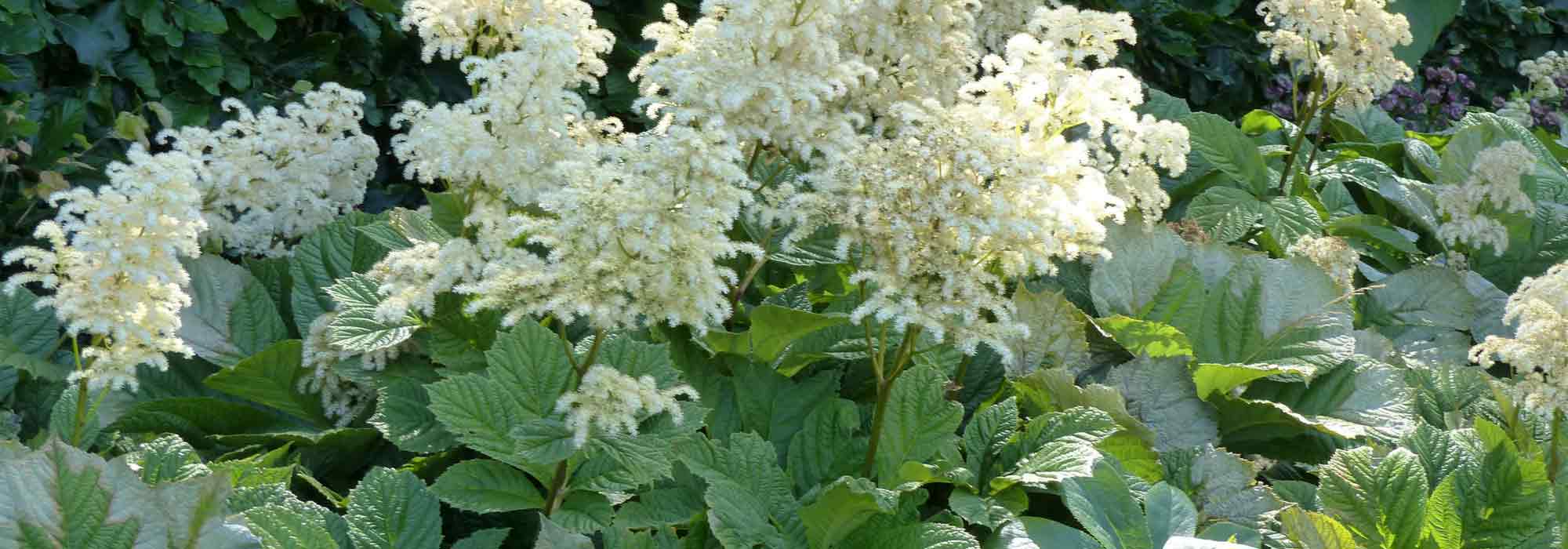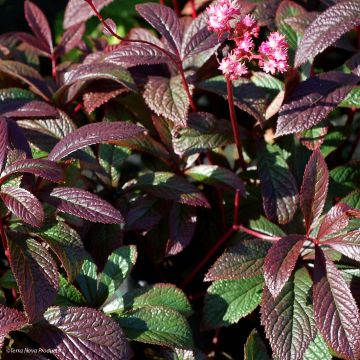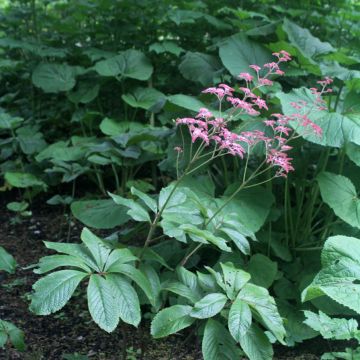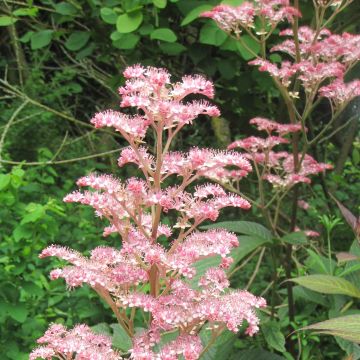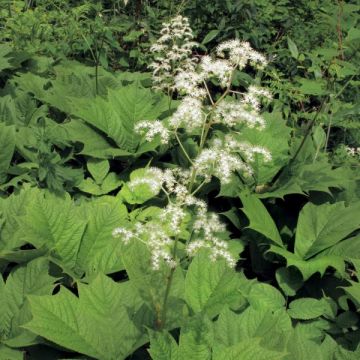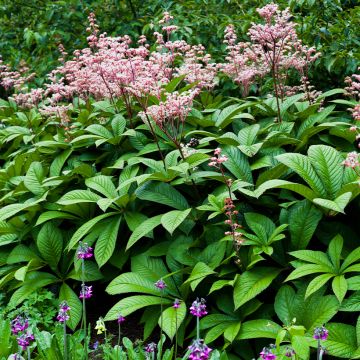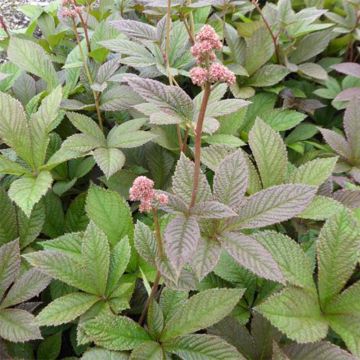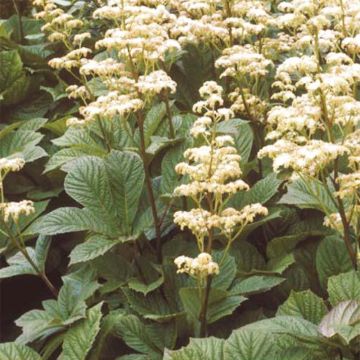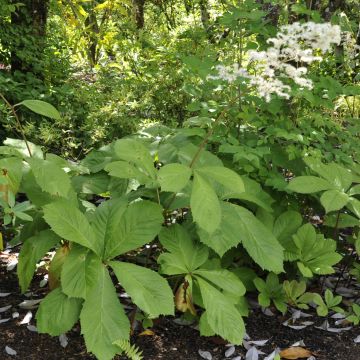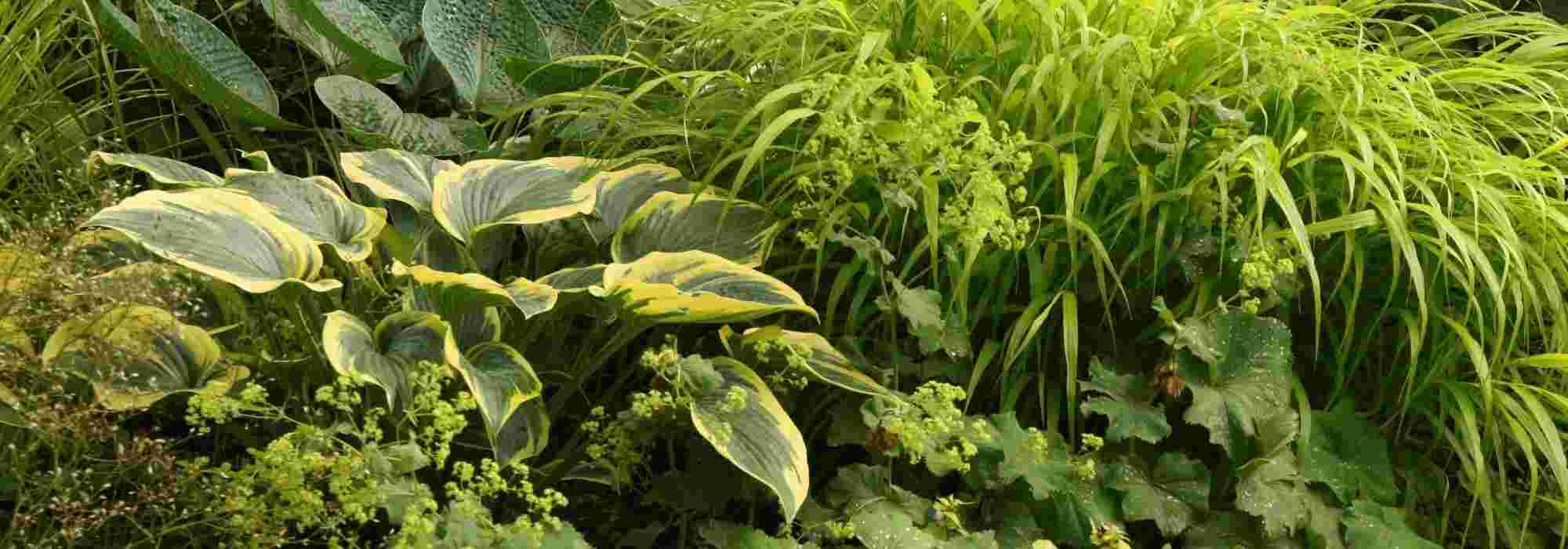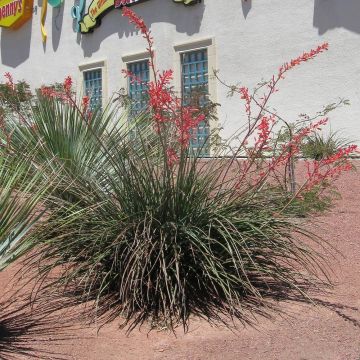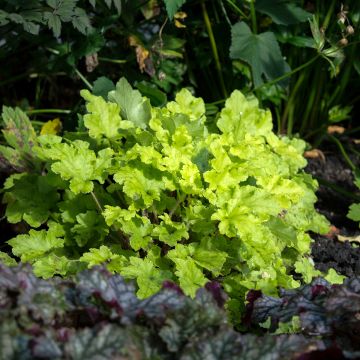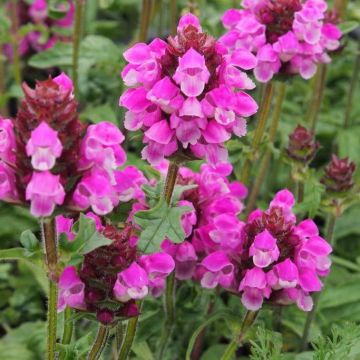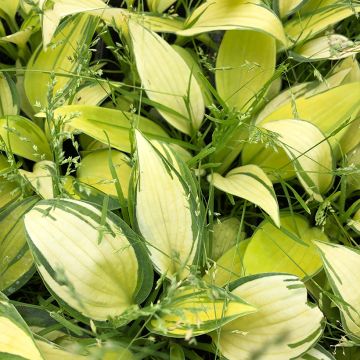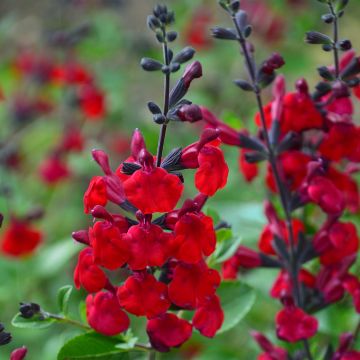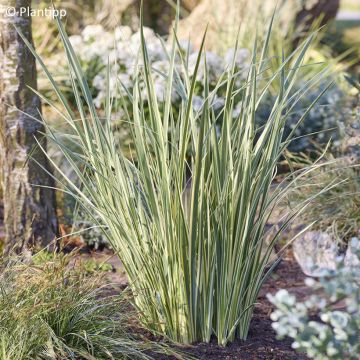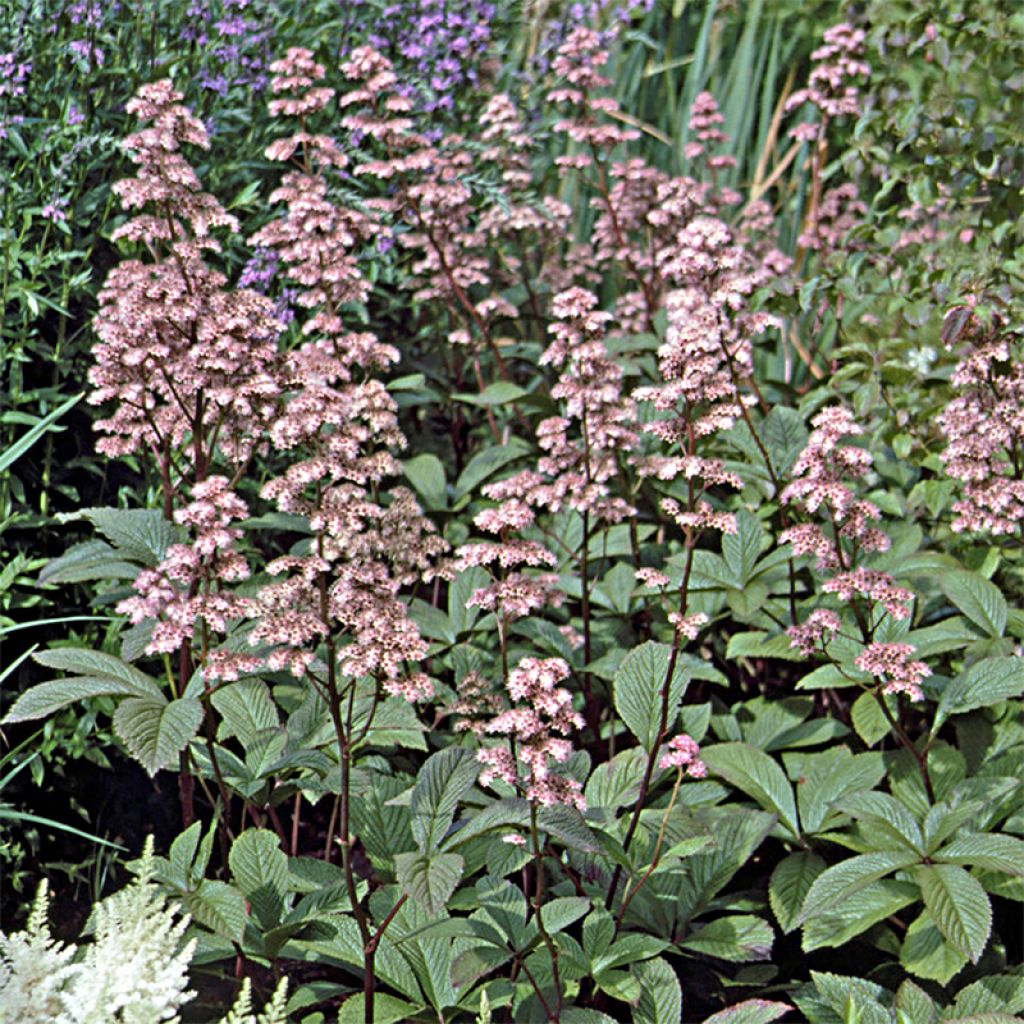

Rodgersia aesculifolia var. henrici


Rodgersia aesculifolia var. henrici
Rodgersia aesculifolia var. henrici
Rodgersia aesculifolia var. henrici
Henry's chesnut-leaved Rodgersia
Unfortunately, upon receiving the 3 young plants, 2 had yellowed leaves and looked really scrawny. After planting, within 2 days the leaves dried up on their own. Great disappointment.
Cyprian, 05/07/2024
Special offer!
Receive a €20 voucher for any order over €90 (excluding delivery costs, credit notes, and plastic-free options)!
1- Add your favorite plants to your cart.
2- Once you have reached €90, confirm your order (you can even choose the delivery date!).
3- As soon as your order is shipped, you will receive an email containing your voucher code, valid for 3 months (90 days).
Your voucher is unique and can only be used once, for any order with a minimum value of €20, excluding delivery costs.
Can be combined with other current offers, non-divisible and non-refundable.
Home or relay delivery (depending on size and destination)
Schedule delivery date,
and select date in basket
This plant carries a 12 months recovery warranty
More information
We guarantee the quality of our plants for a full growing cycle, and will replace at our expense any plant that fails to recover under normal climatic and planting conditions.

Would this plant suit my garden?
Set up your Plantfit profile →
Description
The Rodgersia aesculifolia var. henrici is a natural variety of Rodgersia with chestnut-like leaflets. It is one of its most spectacular forms with its summer flowering in large cloud-like panicles slightly purplish pink. This robust rhizomatous perennial also surprises with its powerful growth, gathered in a large rounded and bushy clump, composed of particularly elegant large palmate leaves, dark green in colour, glossy and deeply veined. It is a very beautiful, majestic and lush perennial, a true star of cool and moist places!
The Rodgersia henrici is native to China, found in western Yunnan and Tibet, and belongs to the saxifrage family. From its fleshy and scaly rhizome grows a clump of large pinnate leaves, reaching 1.2 meters (4 feet) in height. The clumps slowly spread to form more than 1 square meter of clumps over time. The foliage of this perennial is distinguished by its resemblance to chestnut leaves. The leaves can reach 50 cm (20in) in length, they are divided into 7 large lanceolate leaflets, embossed, deeply veined, arranged opposite two by two, with a terminal leaflet. What distinguishes the henrici form from the species is its young bronze-purple spring foliage, becoming dark green in summer, and its spectacular pink flowering, emerging in the heart of summer. The plant produces large branched panicles, with robust stems in old rose colour, ranging from 30 to 70 cm (12 to 28in), adorned with clusters of star-shaped flowers initially in deep pink, blooming into fresh pink.
The Rodgersia aesculifolia var. henrici is a hardy plant despite its exotic and exotic appearance. It appreciates shade and coolness, ideal near water features, in the company of grasses (Miscanthus, in sunny locations) and astilbes, or along the edge of damp woodlands with ferns, tiarellas, ligularias, boehmerias, peltoboykinias, actaeas or heucheras. It tolerates drier conditions, as long as it is planted in shade. Plant it in large numbers to cover the ground along a shaded path, or as a solitary specimen, enhanced by a carpet of golden sagina, candelabra primroses, and the blue flowers of liverworts.
Rodgersia aesculifolia var. henrici in pictures
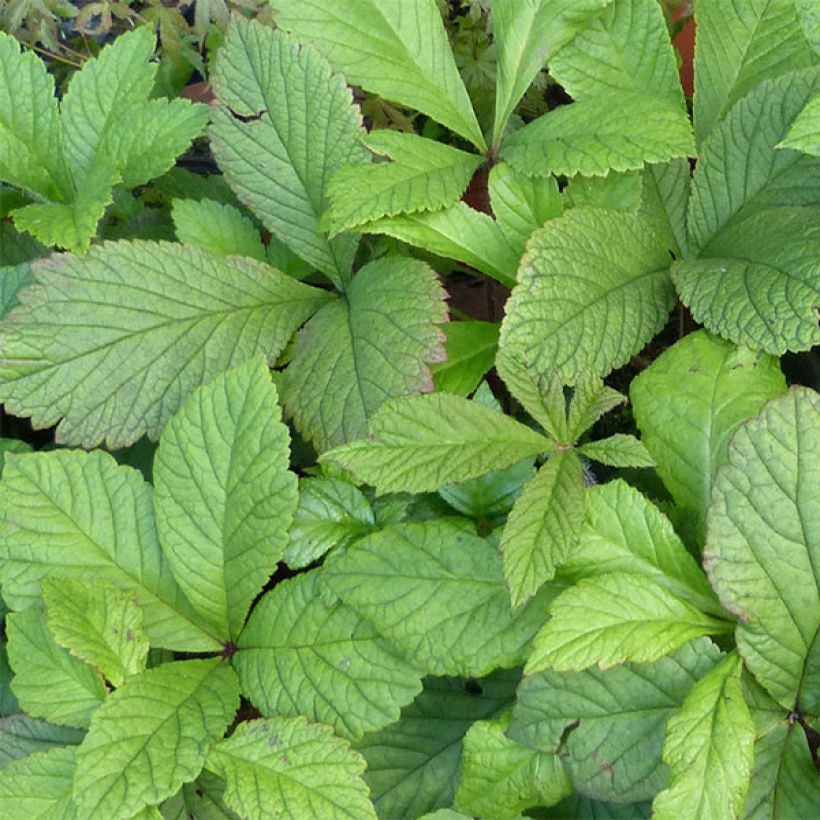

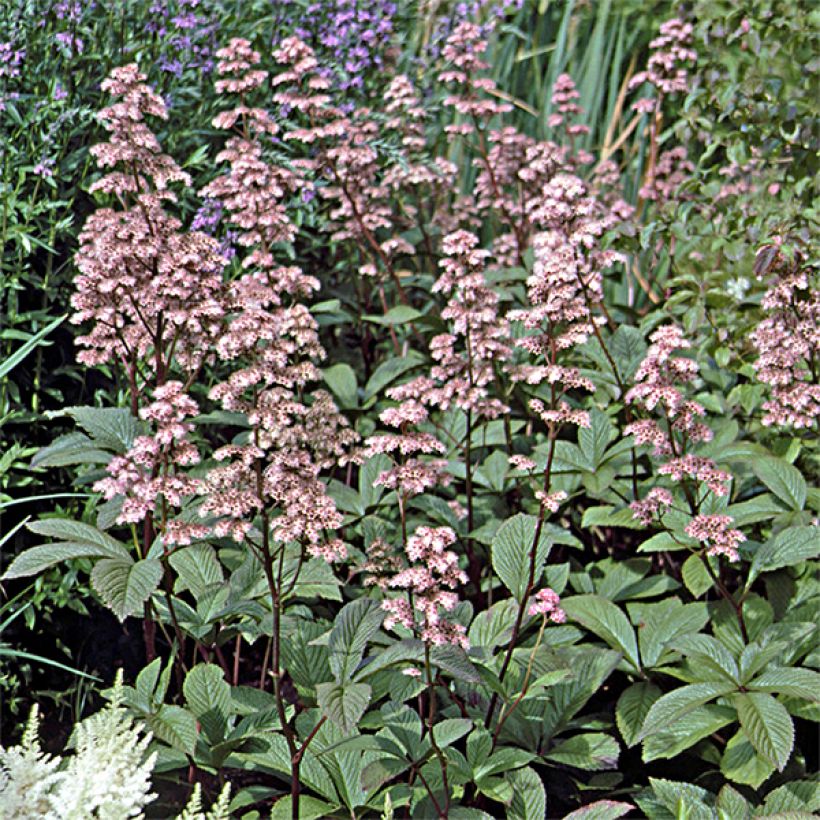

Flowering
Foliage
Plant habit
Botanical data
Rodgersia
aesculifolia var. henrici
Saxifragaceae
Henry's chesnut-leaved Rodgersia
China
Other Rodgersia
View all →Planting and care
The Rodgersia henrici should be planted in moist to wet and rich soil, typically woodland humus, acidic or neutral (avoid planting in limestone areas). It is best planted in partial shade (possibly in full sun in an area that remains moist in summer), with plantings spaced apart; at maturity, the Rodgersia reaches a width of one meter! Make sure to protect it from strong winds and direct sunlight, which can damage its foliage.
Planting period
Intended location
Care
Planting & care advice
-
, onOrder confirmed
Reply from on Promesse de fleurs
Similar products
Haven't found what you were looking for?
Hardiness is the lowest winter temperature a plant can endure without suffering serious damage or even dying. However, hardiness is affected by location (a sheltered area, such as a patio), protection (winter cover) and soil type (hardiness is improved by well-drained soil).

Photo Sharing Terms & Conditions
In order to encourage gardeners to interact and share their experiences, Promesse de fleurs offers various media enabling content to be uploaded onto its Site - in particular via the ‘Photo sharing’ module.
The User agrees to refrain from:
- Posting any content that is illegal, prejudicial, insulting, racist, inciteful to hatred, revisionist, contrary to public decency, that infringes on privacy or on the privacy rights of third parties, in particular the publicity rights of persons and goods, intellectual property rights, or the right to privacy.
- Submitting content on behalf of a third party;
- Impersonate the identity of a third party and/or publish any personal information about a third party;
In general, the User undertakes to refrain from any unethical behaviour.
All Content (in particular text, comments, files, images, photos, videos, creative works, etc.), which may be subject to property or intellectual property rights, image or other private rights, shall remain the property of the User, subject to the limited rights granted by the terms of the licence granted by Promesse de fleurs as stated below. Users are at liberty to publish or not to publish such Content on the Site, notably via the ‘Photo Sharing’ facility, and accept that this Content shall be made public and freely accessible, notably on the Internet.
Users further acknowledge, undertake to have ,and guarantee that they hold all necessary rights and permissions to publish such material on the Site, in particular with regard to the legislation in force pertaining to any privacy, property, intellectual property, image, or contractual rights, or rights of any other nature. By publishing such Content on the Site, Users acknowledge accepting full liability as publishers of the Content within the meaning of the law, and grant Promesse de fleurs, free of charge, an inclusive, worldwide licence for the said Content for the entire duration of its publication, including all reproduction, representation, up/downloading, displaying, performing, transmission, and storage rights.
Users also grant permission for their name to be linked to the Content and accept that this link may not always be made available.
By engaging in posting material, Users consent to their Content becoming automatically accessible on the Internet, in particular on other sites and/or blogs and/or web pages of the Promesse de fleurs site, including in particular social pages and the Promesse de fleurs catalogue.
Users may secure the removal of entrusted content free of charge by issuing a simple request via our contact form.
The flowering period indicated on our website applies to countries and regions located in USDA zone 8 (France, the United Kingdom, Ireland, the Netherlands, etc.)
It will vary according to where you live:
- In zones 9 to 10 (Italy, Spain, Greece, etc.), flowering will occur about 2 to 4 weeks earlier.
- In zones 6 to 7 (Germany, Poland, Slovenia, and lower mountainous regions), flowering will be delayed by 2 to 3 weeks.
- In zone 5 (Central Europe, Scandinavia), blooming will be delayed by 3 to 5 weeks.
In temperate climates, pruning of spring-flowering shrubs (forsythia, spireas, etc.) should be done just after flowering.
Pruning of summer-flowering shrubs (Indian Lilac, Perovskia, etc.) can be done in winter or spring.
In cold regions as well as with frost-sensitive plants, avoid pruning too early when severe frosts may still occur.
The planting period indicated on our website applies to countries and regions located in USDA zone 8 (France, United Kingdom, Ireland, Netherlands).
It will vary according to where you live:
- In Mediterranean zones (Marseille, Madrid, Milan, etc.), autumn and winter are the best planting periods.
- In continental zones (Strasbourg, Munich, Vienna, etc.), delay planting by 2 to 3 weeks in spring and bring it forward by 2 to 4 weeks in autumn.
- In mountainous regions (the Alps, Pyrenees, Carpathians, etc.), it is best to plant in late spring (May-June) or late summer (August-September).
The harvesting period indicated on our website applies to countries and regions in USDA zone 8 (France, England, Ireland, the Netherlands).
In colder areas (Scandinavia, Poland, Austria...) fruit and vegetable harvests are likely to be delayed by 3-4 weeks.
In warmer areas (Italy, Spain, Greece, etc.), harvesting will probably take place earlier, depending on weather conditions.
The sowing periods indicated on our website apply to countries and regions within USDA Zone 8 (France, UK, Ireland, Netherlands).
In colder areas (Scandinavia, Poland, Austria...), delay any outdoor sowing by 3-4 weeks, or sow under glass.
In warmer climes (Italy, Spain, Greece, etc.), bring outdoor sowing forward by a few weeks.






























